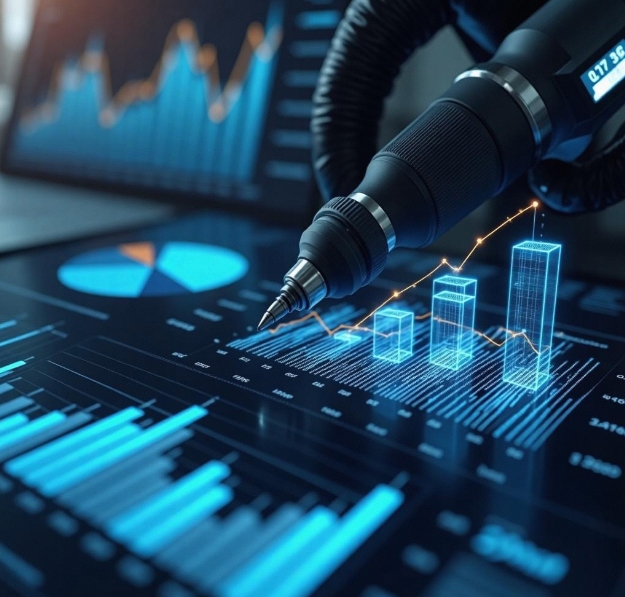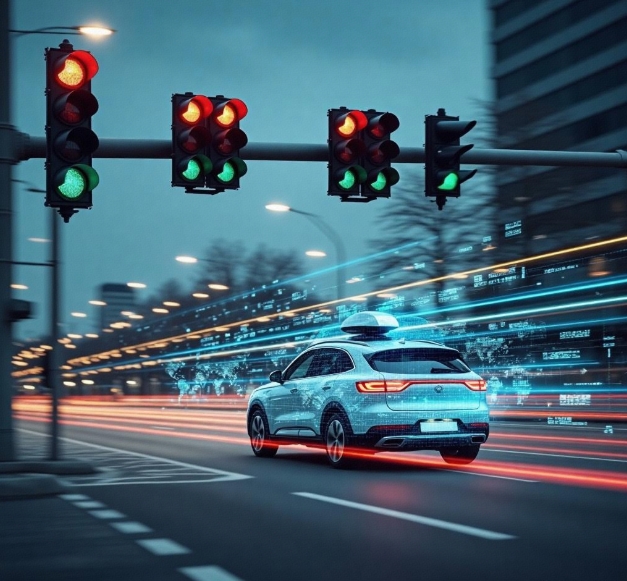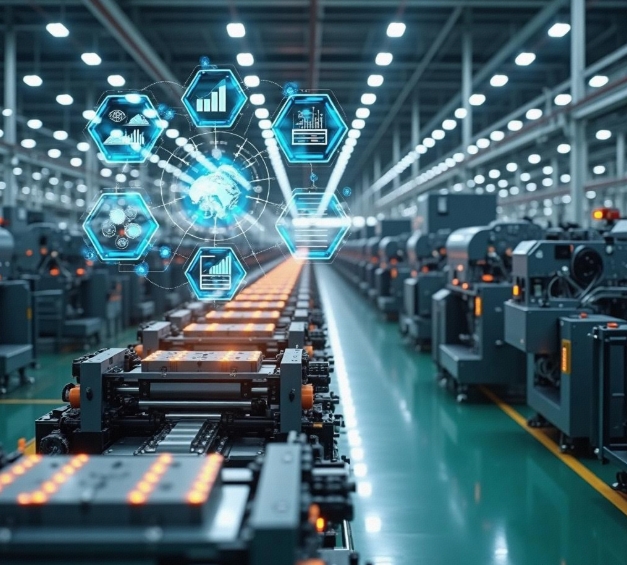The Integration of Artificial Intelligence and the Internet of Things: Smart Application Cases
- latest articles
- 1.DApp Development & Customization: Merging Diverse Market Needs with User Experience 2.Analysis of the Core Technical System in DApp Project Development 3.How to achieve cross-chain interoperability in Web3 projects? 4.How does the tokenization of points reconstruct the e-commerce ecosystem? 5.How to Set and Track Data Metrics for a Points Mall? 6.What is DApp Development? Core Concepts and Technical Analysis 7.Inventory of commonly used Web3 development tools and usage tips 8.Development of a Distribution System Integrated with Social E-commerce 9.Six Key Steps for Businesses to Build a Points Mall System 10.What is DApp Development? A Comprehensive Guide from Concept to Implementation
- Popular Articles
- 1.Future Trends and Technology Predictions for APP Development in 2025 2.Analysis of the DeFi Ecosystem: How Developers Can Participate in Decentralized Finance Innovation 3.From Zero to One: How PI Mall Revolutionizes the Traditional E-commerce Model 4.DAPP Development | Best Practices for Professional Customization and Rapid Launch 5.Recommended by the Web3 developer community: the most noteworthy forums and resources 6.From Cloud Computing to Computing Power Leasing: Building a Flexible and Scalable Computing Resource Platform 7.How to Develop a Successful Douyin Mini Program: Technical Architecture and Best Practices 8.Shared Bike System APP: The Convenient Choice in the Era of Smart Travel 9.How to Create a Successful Dating App: From Needs Analysis to User Experience Design 10.From Design to Development: The Complete Process of Bringing an APP Idea to Life
With the rapid advancement of technology, Artificial Intelligence (AI) and the Internet of Things (IoT) have become some of the most important technologies in today's society. The combination of the two has brought unprecedented transformation and opportunities to various industries. From smart homes to smart cities, from industrial automation to healthcare, the integration of AI and IoT is continuously driving the progress of intelligent applications. This article will explore the profound significance of combining artificial intelligence with the Internet of Things and demonstrate through several practical cases how this integration creates value in different fields.
I. Definitions of Artificial Intelligence and the Internet of Things
Artificial Intelligence (AI)
Artificial Intelligence refers to computer systems that simulate human intelligence, capable of autonomous decision-making through learning, reasoning, problem-solving, and other methods. The development of AI enables machines not only to perform predefined tasks but also to make adaptive adjustments based on the external environment. Through technologies such as big data analysis, deep learning, and natural language processing, AI has gradually entered various aspects of human life.Internet of Things (IoT)
The Internet of Things refers to the interconnection of objects via the internet to achieve information exchange and sharing. IoT devices typically include sensors, actuators, smart terminals, etc., which are interconnected through the internet or local area networks, share data, and collaborate to achieve intelligent control. The development of IoT has made our lives and work smarter and more efficient.
The combination of Artificial Intelligence and the Internet of Things means that IoT devices can not only collect large amounts of real-time data but also analyze, predict, and make decisions through AI technology. This integration transforms IoT from merely a data collector into an executor of intelligent decisions.
II. Key Technologies for the Integration of AI and IoT
Big Data and Cloud Computing
The operation of Artificial Intelligence relies heavily on substantial data support, and the Internet of Things is a crucial source of data collection. IoT devices collect information about the environment and equipment through sensors, and this data is transmitted and stored on cloud platforms for AI analysis. Big data technology enables the effective processing and mining of these massive datasets, providing support for intelligent decision-making.Edge Computing
Edge computing is a technology that shifts data processing tasks from data centers to devices closer to the data source. For IoT devices, edge computing can reduce data transmission latency, improve processing speed, and enable AI to make real-time intelligent decisions, avoiding efficiency losses caused by delays.Deep Learning and Neural Networks
Deep learning is one of the core technologies of AI, which processes data and recognizes patterns by simulating the structure of the human brain's neural networks. In the IoT context, AI uses deep learning models to analyze the vast amounts of data collected by IoT devices, uncovering underlying patterns, making predictions, and providing decision support.
III. Intelligent Application Cases
Smart Homes
Smart homes are one of the most representative fields where AI and IoT converge. By connecting various home devices such as lighting, air conditioning, refrigerators, and security cameras to the internet, users can control them remotely via smartphones or voice assistants. More importantly, the integration of AI enables smart home systems to learn and optimize, gradually enhancing the user's living experience.
For example, a smart thermostat system can not only adjust the indoor temperature based on user settings but also automatically modify the temperature by learning the user's lifestyle habits and external weather conditions, maximizing energy efficiency and reducing consumption. Smart lighting systems can also adjust light intensity based on daylight changes or user activities, achieving both energy savings and comfort.
Smart Cities
With the acceleration of urbanization, smart cities have become an inevitable trend in modern urban development. The combination of AI and IoT makes urban management more efficient and public services more intelligent. For instance, smart transportation systems can monitor traffic flow, vehicle speed, road conditions, and other data through IoT devices, combined with AI for real-time analysis, predicting traffic congestion, and optimizing traffic signal scheduling to alleviate urban traffic pressure.
In terms of environmental monitoring, smart cities use IoT devices to monitor data such as air quality, temperature, humidity, and noise. AI systems can issue warnings based on real-time data and provide decision-making support for relevant departments. For example, during haze conditions, the system can automatically control the air filtration function of air conditioners and issue health reminders to citizens.
Industry 4.0 and Smart Manufacturing
In the manufacturing industry, the integration of AI and IoT has brought revolutionary changes. Through sensors and smart devices, manufacturers can monitor various data on production lines in real-time, including equipment operating status, product quality, and production progress. AI systems can analyze this data in real-time, promptly identify potential issues in production, and make intelligent decisions to reduce downtime and improve production efficiency.
For example, some factories use IoT devices to collect real-time data from production equipment, combined with AI to predict the probability of equipment failure, allowing for maintenance before problems occur, thus avoiding production halts and reducing maintenance costs. Additionally, AI can analyze bottlenecks in the production process, optimize workflows, and enhance overall production capacity.
Smart Healthcare
In the healthcare industry, the combination of AI and IoT is transforming traditional medical models. Through sensor devices, patients' vital signs such as heart rate, blood sugar, and blood pressure can be transmitted to doctors in real-time, and AI can analyze this data in real-time to detect potential health risks early and issue warnings. For instance, AI can predict the probability of a patient developing an illness based on their health data and medical history, providing doctors with personalized treatment plans.
Furthermore, IoT devices can assist doctors in remote diagnosis and surgery within hospitals. Through smart wearable devices, patients can monitor their health at home, and doctors can remotely view the data and make diagnoses without the need for hospital visits. This application of technology not only improves medical efficiency but also reduces patients' healthcare costs.
Smart Agriculture
The combination of AI and IoT has also had a profound impact in the agricultural sector. Through IoT devices such as soil moisture sensors and weather monitoring equipment, farmers can monitor various environmental data of their fields in real-time. AI systems can analyze this data to help farmers make scientific decisions. For example, AI can predict weather changes and provide farmers with optimal suggestions for sowing, irrigation, fertilization, etc., enhancing crop yield and quality.
Some agricultural enterprises use drones equipped with IoT devices for field inspections and utilize AI for real-time diagnosis of soil health and crop diseases. This approach not only improves agricultural production efficiency but also reduces labor costs and resource waste.
IV. Challenges and Prospects
Although the integration of Artificial Intelligence and the Internet of Things has brought many innovations and transformations to various industries, the application of this technological fusion still faces some challenges. Firstly, data security and privacy protection are major concerns. The massive data collected by IoT devices may contain users' private information, and if this data is leaked, it could lead to serious consequences. Therefore, while promoting AI and IoT technologies, it is essential to strengthen data security and privacy protection measures.
Secondly, the issue of technical standardization for AI and IoT remains unresolved. IoT devices produced by different manufacturers may have compatibility issues, and the lack of unified technical standards can affect device interoperability, thereby impacting the overall system's effectiveness.
Looking ahead, with the continuous development of technologies such as 5G and edge computing, the integration of AI and IoT will become even tighter, and application scenarios will become more extensive. It is foreseeable that the future world will be an intelligently interconnected one, where AI and IoT will fundamentally transform our lives, work, and social structures.
Conclusion
The integration of Artificial Intelligence and the Internet of Things is driving the intelligent transformation of various industries in an irreversible trend. From smart homes to smart cities, from industrial manufacturing to smart healthcare, every field is experiencing the profound impact of this technological wave. Despite challenges such as data security and technical standards, with continuous technological progress and innovation, the combination of AI and IoT will create a smarter, more efficient, and more convenient future.
-

How does artificial intelligence technology transform the operational models of modern enterprises?
In the wave of the digital era, artificial intelligence (AI) technology has tran···
-

How to Utilize Artificial Intelligence for Precision Medicine and Health Management
With the rapid advancement of technology, artificial intelligence (AI) has demon···
-

Integration and Application of Artificial Intelligence and Robotics
In today's era of rapid technological advancement, the integration of artificial···

 Blockchain
Blockchain












